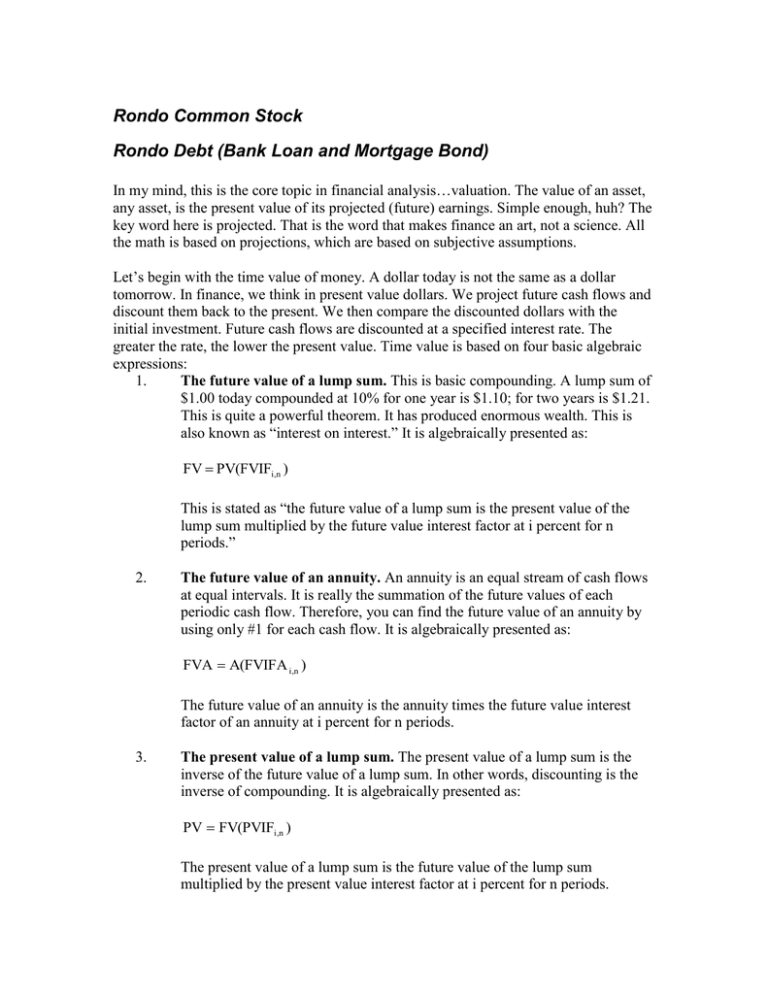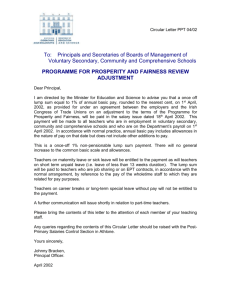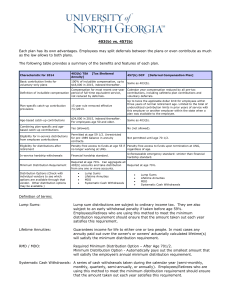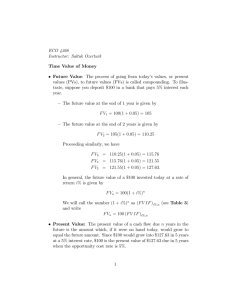Rondo Common Stock
advertisement

Rondo Common Stock Rondo Debt (Bank Loan and Mortgage Bond) In my mind, this is the core topic in financial analysis…valuation. The value of an asset, any asset, is the present value of its projected (future) earnings. Simple enough, huh? The key word here is projected. That is the word that makes finance an art, not a science. All the math is based on projections, which are based on subjective assumptions. Let’s begin with the time value of money. A dollar today is not the same as a dollar tomorrow. In finance, we think in present value dollars. We project future cash flows and discount them back to the present. We then compare the discounted dollars with the initial investment. Future cash flows are discounted at a specified interest rate. The greater the rate, the lower the present value. Time value is based on four basic algebraic expressions: 1. The future value of a lump sum. This is basic compounding. A lump sum of $1.00 today compounded at 10% for one year is $1.10; for two years is $1.21. This is quite a powerful theorem. It has produced enormous wealth. This is also known as “interest on interest.” It is algebraically presented as: FV PV(FVIFi,n ) This is stated as “the future value of a lump sum is the present value of the lump sum multiplied by the future value interest factor at i percent for n periods.” 2. The future value of an annuity. An annuity is an equal stream of cash flows at equal intervals. It is really the summation of the future values of each periodic cash flow. Therefore, you can find the future value of an annuity by using only #1 for each cash flow. It is algebraically presented as: FVA A(FVIFA i,n ) The future value of an annuity is the annuity times the future value interest factor of an annuity at i percent for n periods. 3. The present value of a lump sum. The present value of a lump sum is the inverse of the future value of a lump sum. In other words, discounting is the inverse of compounding. It is algebraically presented as: PV FV(PVIFi,n ) The present value of a lump sum is the future value of the lump sum multiplied by the present value interest factor at i percent for n periods. 4. The present value of an annuity. This applies the additive function to a stream of discounted equal periodic, equal cash flows. It is stated algebraically: PVA A(PVIFA i,n ) The present value of an annuity is the annuity times the present value interest factor at i percent for n periods. Essentially, using these four basic algebraic expressions, you can value any asset, i.e., securities, capital projects, businesses, etc. Derivatives require calculus, since they represent the change over the contract life and thus, nonlinear. Let’s use a bond as an example. The present value of a bond is the present value of an annuity coupon payment cash stream and the present value of the principal lump sum upon maturity: V0 CP(PVIFA i,n ) P(PVIFi,n ) You can apply these expressions to dividend cash streams or projected earnings per share in valuing preferred and common stock. The key is identifying the cash flow stream and the required rate of return. Rates of return for various assets are risk spreads over the Treasury bill rate, 3-or 6-month T-bills (the spreads will vary depending on the bill maturity). I recommend you construct cash flow time lines to help visualize the cash streams. Using a 2-year note (bond): Vo CP CP CP CP + P 1 2 3 4 Why is there four periods for a 2-year note? Because in the US, bonds pay interest semiannually. You need to adjust the interest rate to i/2 and the periods to 2n. Attempt to verbally express the equations presented in the text. This will clarify the relationship among the variables and crystallize the concepts in valuing Rondo’s securities.








